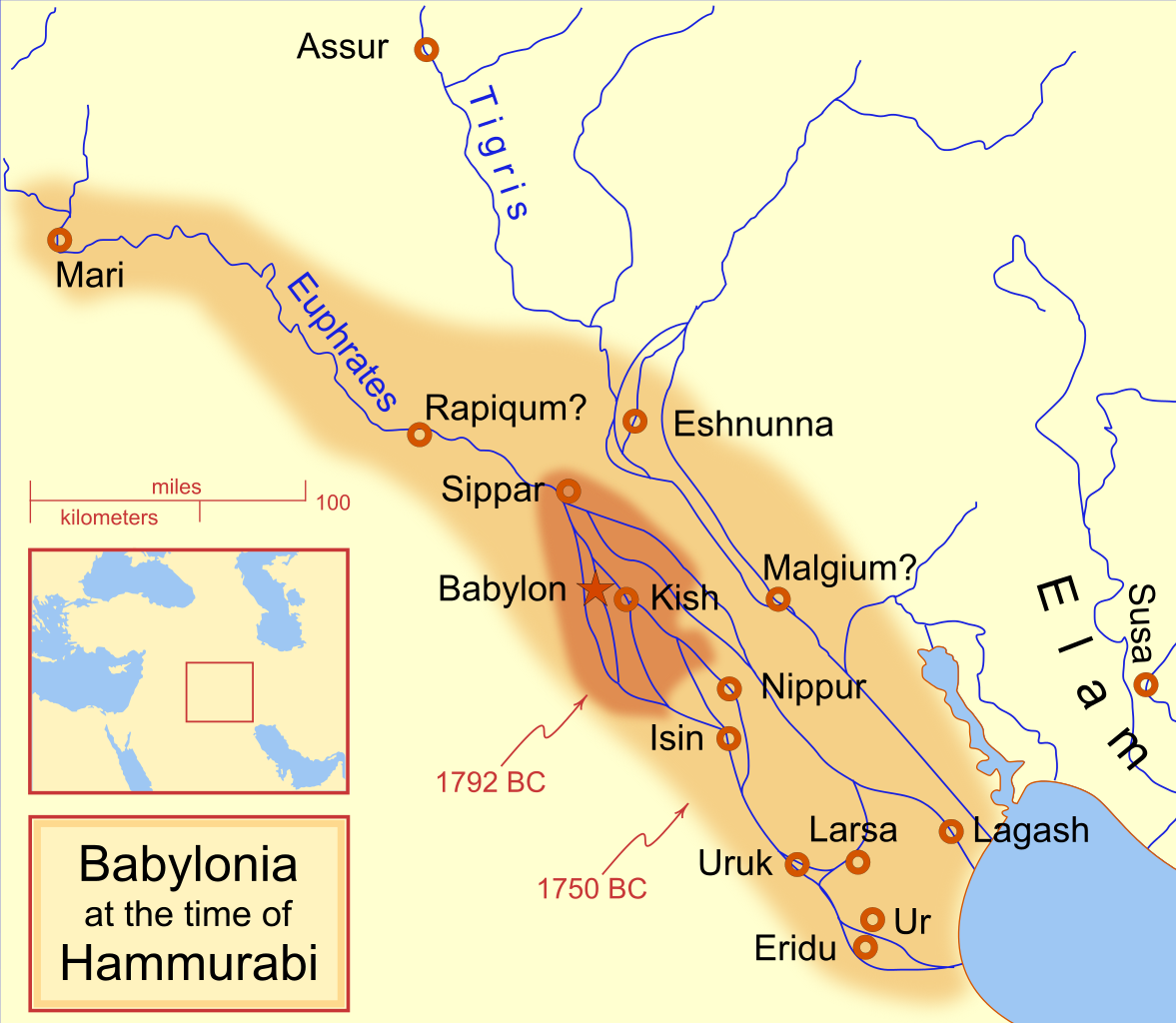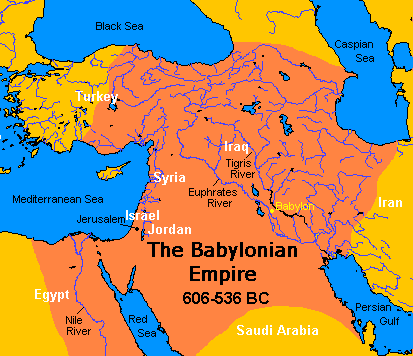sooda
Veteran Member
Babylon was a key kingdom in ancient Mesopotamia from the 18th to 6th centuries BC. The city was built on the Euphrates river and divided in equal parts along its left and right banks, with steep embankments to contain the river's seasonal floods. Babylon was originally a small Akkadian town dating from the period of the Akkadian Empire c. 2300 BC. The town became part of a small independent city-state with the rise of the First Babylonian dynasty in the 19th century BC.
After the Amorite king HHammurabi created a short-lived empire in the 18th century BC, he built Babylon up into a major city and declared himself its king, and southern Mesopotamia became known as Babylonia and Babylon eclipsed Nippur as its holy city.
The empire waned under Hammurabi's son Samsu-iluna and Babylon spent long periods under Assyrian, Kassite and Elamite domination. After being destroyed and then rebuilt by the Assyrians, Babylon became the capital of the short lived Neo-Babylonian Empire from 609 to 539 BC.
The Hanging Gardens of Babylon was one of the Seven Wonders of the Ancient World, although a number of scholars believe these were actually in the Assyrian capital of Nineveh. After the fall of the Neo-Babylonian Empire, the city came under the rule of the Achaemenid, Seleucid, Parthian, Roman, and Sassanid empires.
It has been estimated that Babylon was the largest city in the world c. 1770 – c. 1670 BC, and again c. 612 – c. 320 BC. It was perhaps the first city to reach a population above 200,000. Estimates for the maximum extent of its area range from 890[3] to 900 hectares (2,200 acres).
The remains of the city are in present-day Hillah, Babil Governorate, Iraq, about 85 kilometres (53 mi) south of Baghdad, comprising a large tell of broken mud-brick buildings and debris.
The main sources of information about Babylon—excavation of the site itself, references in cuneiform texts found elsewhere in Mesopotamia, references in the Bible, descriptions in classical writing (especially by Herodotus), and second-hand descriptions (citing the work of Ctesias and Berossus)—present an incomplete and sometimes contradictory picture of the ancient city even at its peak in the sixth century BC.
continued
Babylon - Wikipedia
By around the 19th century BC, much of southern Mesopotamia was occupied by Amorites, nomadic tribes from the northern Levant who were Northwest Semitic speakers, unlike the native Akkadians of southern Mesopotamia and Assyria, who spoke East Semitic.
The Amorites at first did not practice agriculture like more advanced Mesopotamians, preferring a semi-nomadic lifestyle, herding sheep. Over time, Amorite grain merchants rose to prominence and established their own independent dynasties in several south Mesopotamian city-states, most notably Isin, Larsa, Eshnunna, Lagash, and later, founding Babylon as a state.
After the Amorite king HHammurabi created a short-lived empire in the 18th century BC, he built Babylon up into a major city and declared himself its king, and southern Mesopotamia became known as Babylonia and Babylon eclipsed Nippur as its holy city.
The empire waned under Hammurabi's son Samsu-iluna and Babylon spent long periods under Assyrian, Kassite and Elamite domination. After being destroyed and then rebuilt by the Assyrians, Babylon became the capital of the short lived Neo-Babylonian Empire from 609 to 539 BC.
The Hanging Gardens of Babylon was one of the Seven Wonders of the Ancient World, although a number of scholars believe these were actually in the Assyrian capital of Nineveh. After the fall of the Neo-Babylonian Empire, the city came under the rule of the Achaemenid, Seleucid, Parthian, Roman, and Sassanid empires.
It has been estimated that Babylon was the largest city in the world c. 1770 – c. 1670 BC, and again c. 612 – c. 320 BC. It was perhaps the first city to reach a population above 200,000. Estimates for the maximum extent of its area range from 890[3] to 900 hectares (2,200 acres).
The remains of the city are in present-day Hillah, Babil Governorate, Iraq, about 85 kilometres (53 mi) south of Baghdad, comprising a large tell of broken mud-brick buildings and debris.
The main sources of information about Babylon—excavation of the site itself, references in cuneiform texts found elsewhere in Mesopotamia, references in the Bible, descriptions in classical writing (especially by Herodotus), and second-hand descriptions (citing the work of Ctesias and Berossus)—present an incomplete and sometimes contradictory picture of the ancient city even at its peak in the sixth century BC.
continued
Babylon - Wikipedia
By around the 19th century BC, much of southern Mesopotamia was occupied by Amorites, nomadic tribes from the northern Levant who were Northwest Semitic speakers, unlike the native Akkadians of southern Mesopotamia and Assyria, who spoke East Semitic.
The Amorites at first did not practice agriculture like more advanced Mesopotamians, preferring a semi-nomadic lifestyle, herding sheep. Over time, Amorite grain merchants rose to prominence and established their own independent dynasties in several south Mesopotamian city-states, most notably Isin, Larsa, Eshnunna, Lagash, and later, founding Babylon as a state.


